

What is slow banking? 5 tried & tested ways to make it work!
What is slow banking? 5 tried & tested ways to make it work!
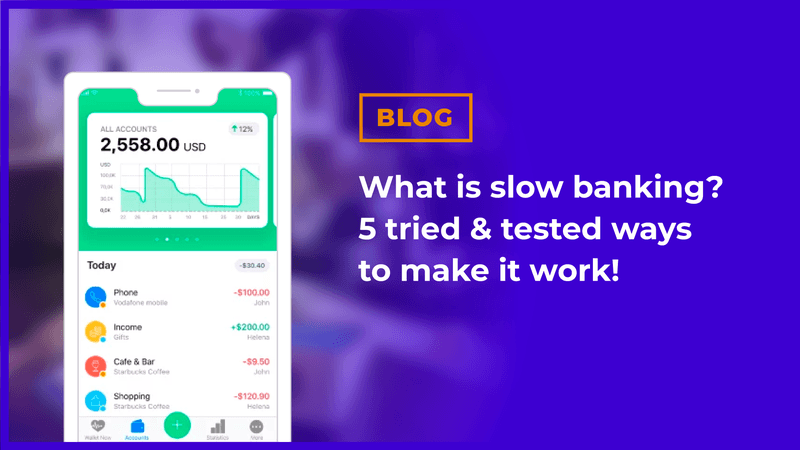
The concept of "slow banking" is represented by a piggy bank, symbolizing the focus on long-term savings and more complex financial products, as opposed to fast, transactional digital banking.
We hear that digital banking is the new normal, but not all of the services that banks traditionally provide can be done online. While fintech apps are great at fast peer-to-peer payments and quick investments, more complex and long-term products like pensions, insurance, or investments are not yet fully digital. We call this segment ‘slow banking’ - and there’s a revolution brewing. With well-known gamification examples like points systems and prizes, some businesses are creating the motivation needed to get users online.
According to experts, this is the next growth opportunity in finance!
In this article, we’ll discuss slow banking, the challenges in the sector, and 5 gamification examples that will help the slow banking revolution.
- What is slow banking?
- 3 challenges the sector must overcome
- 5 gamification examples that help slow banking
- 3 of the best gamification examples you need to see
- Recap
What is slow banking?
Today, digital banks are competing to be available for users at the instant they’re needed. Accounts are often free and fast to open and paying a friend is easier than ever. This is what we call ‘fast banking’ - quick cash, current accounts, and speedy transfers. To be sure, innovation in the fintech sector has perfected this, but there is yet a way to go in ‘slow money’. This segment is all about the long-term customer value. They care about sustainability and sell more complex products that last such as pensions and insurance.
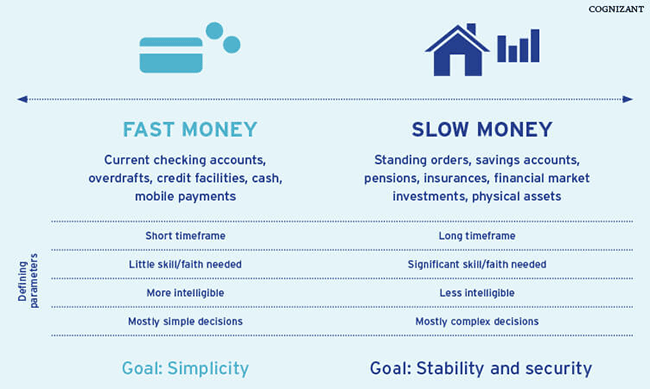
This diagram clearly separates "fast money" (focused on speed and transactions) from "slow money" (emphasizing long-term value and customer relationships), providing a visual anchor for the article's core concept.
But the sector isn’t fully digital yet. The reason is that many consumers are not comfortable completing the customer journey online. Instead, they do what is called ROPO, meaning ‘research online, purchase offline’. So while digital has a huge impact on purchase intention, studies find that 55% of customers still won’t purchase insurance online. The story in pensions is similar. Research finds that while 62% of Gen Z would use a pensions app, 38% of workers have never viewed their pensions online.
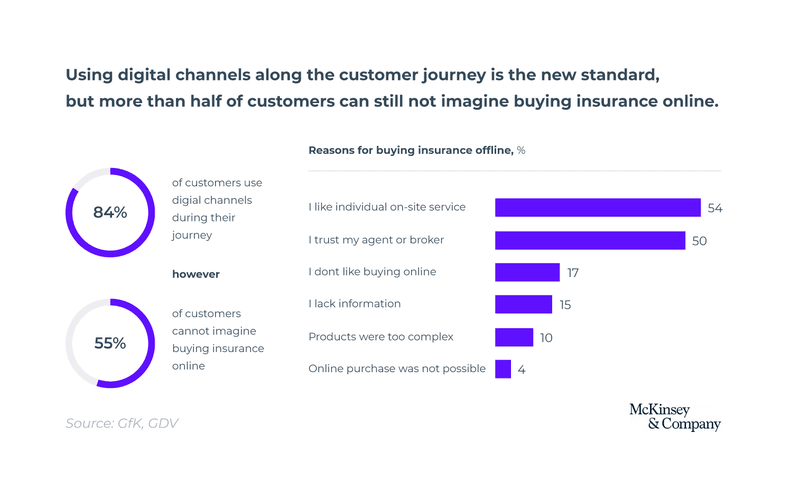
The chart illustrates consumer behavior in slow banking, showing a significant percentage of users who will not purchase insurance online, which underlines the challenge of full digitalization.
Cognizant - "Getting slow money right will make customers more loyal, less price sensitive and more inclined to do business with [you]."
This is where fintech must step in! Cognizant, a consulting firm, found that digitalizing slow money could boost revenue by 14.2%. But to get that prize, there are challenges that banks and fintech must overcome.
3 challenges the sector must overcome
Organizations in slow banking need to tackle the problems in the sector if they want to secure their position. For one, financial institutions need to know that slow-money products often require their customers to do a lot of research, make complex decisions, and have financial literacy. These barriers make up the 3 big challenges for slow money:
#1 Customer retention is a struggle
Across banking in general, Day 30 app user retention hovers around 11.5%. In other words, 9 in 10 customers won’t use your app for longer than a month! A huge factor that drives churn is a poor user experience -basically, an app that isn’t valuable, fun, or satisfying. Indeed, research shows that 40% of customers will leave their current provider if they can find a better digital experience somewhere else.
#2 Financial literacy is low and hard to build
In a paper from the OECD, they found that just 53% of people have ‘basic financial skills’. Among those statistics, young people regularly scored lower than their older counterparts. Given that young people make up the majority of new and existing fintech customers, and prefer digital channels, this is a problem. As such, banks selling complex products must learn how to inform their young consumers - meaning they must improve user retention. To be sure, education is not gained overnight!
#3 More integration across platforms is needed to create a multi-channel approach
Especially in slow money, people feel more secure in purchasing a product when there is a personal touch. This could be because people have questions about their particular situation, or just need a representative to trust and to have as a point of contact. Often, these concerns lead customers to ‘research online, purchase offline’ as mentioned earlier. Because of this, all different channels need to be integrated to create a seamless customer journey. Make no mistake about it, integration is overwhelmingly important for all consumers in banking - and even more so for younger customers.
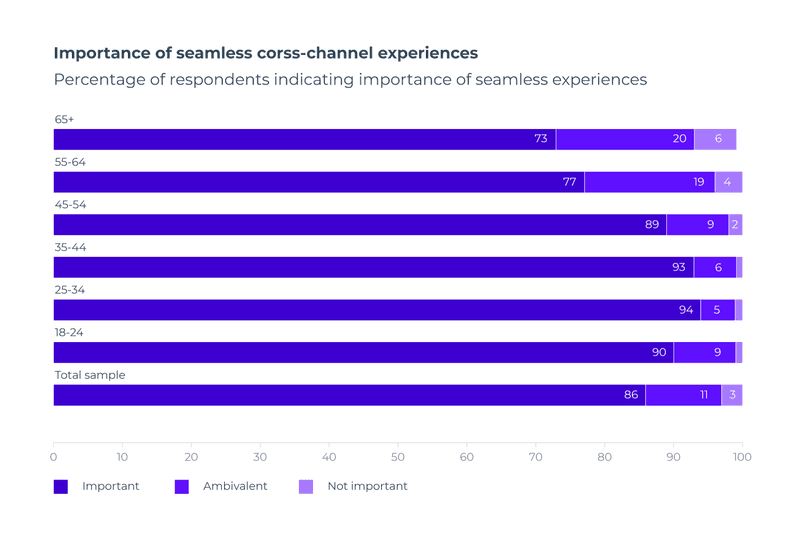
This graph emphasizes how important a positive and integrated user experience is for customer satisfaction and retention, particularly in the context of slow money products.
5 gamification examples that promote slow banking
Gamification is a tool that can work magic for finance, and this is just as much the case for slow money as any other segment. Slow money organizations often strive to help users with financial education and engage in social responsibility initiatives such as sustainability and the environment - and here is where gamification aligns so well.
By using game-like elements in a non-game context, gamified apps incentivize desired user behavior and enhance customer motivation. Indeed, this is the approach endorsed by Belgian fintech expert Bjorn Cumps.
Are you still learning the basics of gamification? Get all the info you need right here!
So for those who want to get the slow money right, these 5 gamification examples will work wonders:
1. Badge reward system
A badge system works on multiple levels and results in a range of positive effects:
- Gives users instant feedback.
- Provides tasks with meaning.
- The rush of receiving a badge will push users to achieve the next one!
- Seeing locked badges motivates users to unlock them - this is called ‘constraint’. Nobody likes to see greyed-out features!
Studies show that achievements improve customer motivation.
2. Loyalty program
Loyalty programs reward users for their continued engagement and customers appreciate them. After all, why should they stick with you for the long haul, if they are treated just like a new customer? Taking care of your most loyal users can result in great rewards, for example, Revolut’s loyalty program boosted incremental sales by 625%!
3. Personalized and contextual notifications
Personalized notifications are powerful when done right - research shows they can boost push notification conversion rate by 40%. The essence of personalized and contextual notifications is giving customers messages that are tailored to them and at the most relevant time. A big challenge here is to understand the customer and their buying behavior. When do customers need a certain product, and when’s best to offer it?
4. Progress bars
Progress bars are perfect in slow money. Consider that you want to incentivize your users to achieve a long-term saving or investment goals. A bar that tracks their progress is what you need to have! It provides instant feedback and fulfills the need for growth.
Gamify your app with your business goals in mind! Speak to our experts and see how gamification can help you.
5. Points systems
Points systems are rewarding and also give your tasks a competitive edge. Users will feel that they have achieved something when their points increase, and especially when they can compare them against the points of others. Indeed, a points system is a simple yet powerful way to develop actionable data that you can leverage.
3 of the best gamification examples you need to see
These 3 apps are some of the best gamification examples in slow money. See how they work and the incredible results they achieved!
Australia Commonwealth Bank and the mini-game that banked 600 loans
How do you educate users on property investment and make it fun? With gamification, of course! The Australian Commonwealth Bank developed a game called Investorville, a property investment simulator. Users chose profiles and simulated investing in housing markets across the country, without risking any of their own money. In doing so, the app lets users ‘try before they buy’ and have fun doing it! As a result of tapping into a customer motivation that kept users playing, the bank financed 600 loans in just 1 year.

The "Investorville" simulator from Commonwealth Bank shows how a gamified application can educate users about complex financial topics like property investment, leading to increased engagement and real business outcomes.
Banx incentivizes users to be sustainable with points systems and rewards
Banx is a collaboration between the Belgian bank Belfius and leading digital company Proximus, and aims to give users a ‘personal CO2 dashboard in their pocket’. In short, Banx embodies the sustainable side of slow money. In the app, progress bars keep users informed on their emissions, and users are rewarded with points for sustainable actions, which can then be exchanged for discounts at Banx’s ecological partners. As a result, the app has been found to reduce users' carbon footprint by as much as 50%!
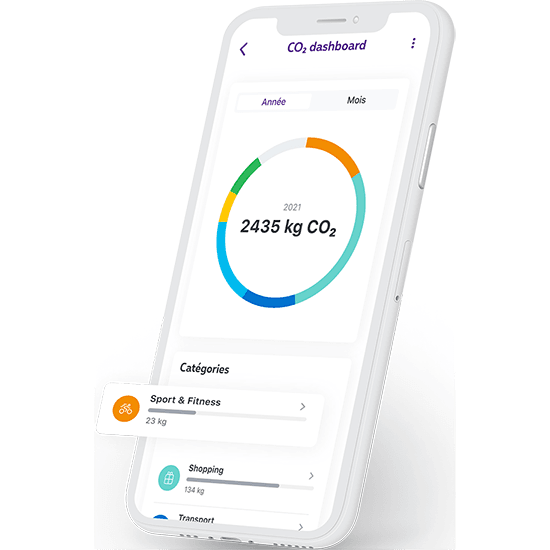
The Banx app's CO2 dashboard illustrates the effective use of progress bars and rewards to motivate users towards sustainable behaviors, directly connecting financial activities with environmental impact.
Mint is a personal finance app that empowers users
Mint has a clear and integrated gamification strategy, including features from in-depth performance graphs, goal-setting, and a clever AI that personalizes the user experience. This involves smarter search functions and proactive notifications that encourage users to save money. These gamification examples empower the user and studies confirm it! Research shows that the gamification in Mint fulfilled user needs for competence and autonomy, and in turn facilitated long-lasting and satisfying customer motivation.
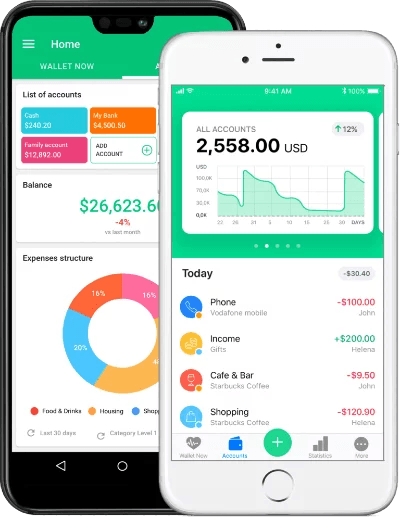
Mint's user interface demonstrates how features like goal-setting and detailed performance graphs create a motivating and empowering experience for users managing their personal finances.
Easily incentivize & keep users motivated to use your product? Discover our app gamification platform!
Recap
Not everything in banking is yet digital and according to experts, there is still an opportunity for growth! The missing piece to make finance truly digital is optimizing ‘slow banking’, meaning long-term and complex products like insurance or pensions.
Using gamification examples like points systems and prizes, some banks and fintech are creating the customer motivation needed. In this article, we’ll touch on how to do it:
What is slow banking?
So far, digital growth has been concentrated in fast money products like peer-to-peer payments and current accounts. But there is yet a way to go in ‘slow money’ services like pensions, savings accounts, and insurance. These are more complex, long-term, and resource-intensive products that require closer personal investment.
A lot of slow money products follow a ROPO customer journey, meaning ‘research online, purchase offline’. Indeed, studies find that 55% of customers still won’t purchase insurance online. The top reasons for offline purchases include tailored services and that they are more trustworthy. But there is an opportunity in digitalizing:
Cognizant - "Getting slow money right will make consumers more loyal, less price sensitive and more inclined to do business with [you]."
Cognizant, a consulting firm, found that digitalizing slow money could boost revenue by 14.2%. But to get that prize, there are challenges that banks and fintech must overcome.
3 challenges the sector must overcome
Customer retention is a struggle
Across banking in general, Day 30 app user retention hovers around 11.5%. A huge factor that drives churn is a poor user experience. Indeed, research shows that 40% of customers will leave their current provider if they can find a better digital experience.
Financial literacy is low and hard to build
In a paper from the OECD, they found that just 53% of people achieved ‘basic financial skills’. Moreover, young people regularly scored lower than their older counterparts. Given that young people make up the majority of new and existing fintech users, as well as mobile app users, this is a problem that must be tackled to digitalize successfully.
More integration across platforms is needed to create a multi-channel approach
Especially in slow money, people feel more secure in purchasing a product when there is a personal touch. This leads customers to ‘research online, purchase offline’ and as such requires your different channels to be integrated to create a seamless customer journey. Integration is overwhelmingly important for all consumers in banking - even more so for young customers.
5 gamification examples that help slow banking
Many slow money businesses teach users financial literacy and care about sustainability, and gamification can help this. By using game-like elements in a non-game context, gamified apps incentivize desired user behavior and enhance customer motivation. Indeed, this is the approach endorsed by Belgian fintech expert Bjorn Cumps.
So for those who want to get slow money right, these 5 gamification examples work wonders:
- Badge reward system. In short, badges give users instant feedback and provide tasks with meaning. In addition, receiving a badge will create customer motivation to unlock the next one, and seeing greyed-out features will motivate users even more.
- Loyalty program. Taking care of your most loyal users can result in great rewards, for example, Revolut’s loyalty program boosted incremental sales by 625%!
- Personalized & contextual notifications - what the user needs and when they need it. Research shows that these AI-powered notifications can boost the conversion rate by 40%.
- Progress bars. Incentivize your users to achieve a long-term saving or investment goals with a bar that provides instant feedback and fulfills the user's need for growth.
- Points systems. Points systems are rewarding and also give your tasks a competitive edge. Users will feel that they have achieved something when their points increase, and especially when they can compare them against the points of others.
3 of the best gamification examples you need to see
Australia Commonwealth Bank and the mini-game that banked 600 loans
The Australian Commonwealth Bank developed a game called Investorville, a property investment simulator. In the game, users chose investor profiles and simulated investing in housing markets across the country, without risking any of their own money. As a result, the bank financed 600 loans in just 1 year!
Banx incentivizes users to be sustainable with points systems and rewards
Banx gives users a ‘personal CO2 dashboard in their pocket’. In the app, progress bars keep users informed on their emissions, and users are rewarded with points for sustainable actions, which can be exchanged for discounts at Banx’s ecological partners. As a result, the app has been found to reduce users' carbon footprint by as much as 50%!
Mint is a personal finance app that empowers users
Mint has a clear and integrated gamification strategy, including features from in-depth performance graphs, goal-setting, and a clever AI that personalizes the user experience. This involves smarter search functions and proactive notifications that encourage users to save money. These gamification examples empower the user and studies confirm it!
Get inspired with an expert-led gamification workshop tailored to your app & business goals!
Related Posts
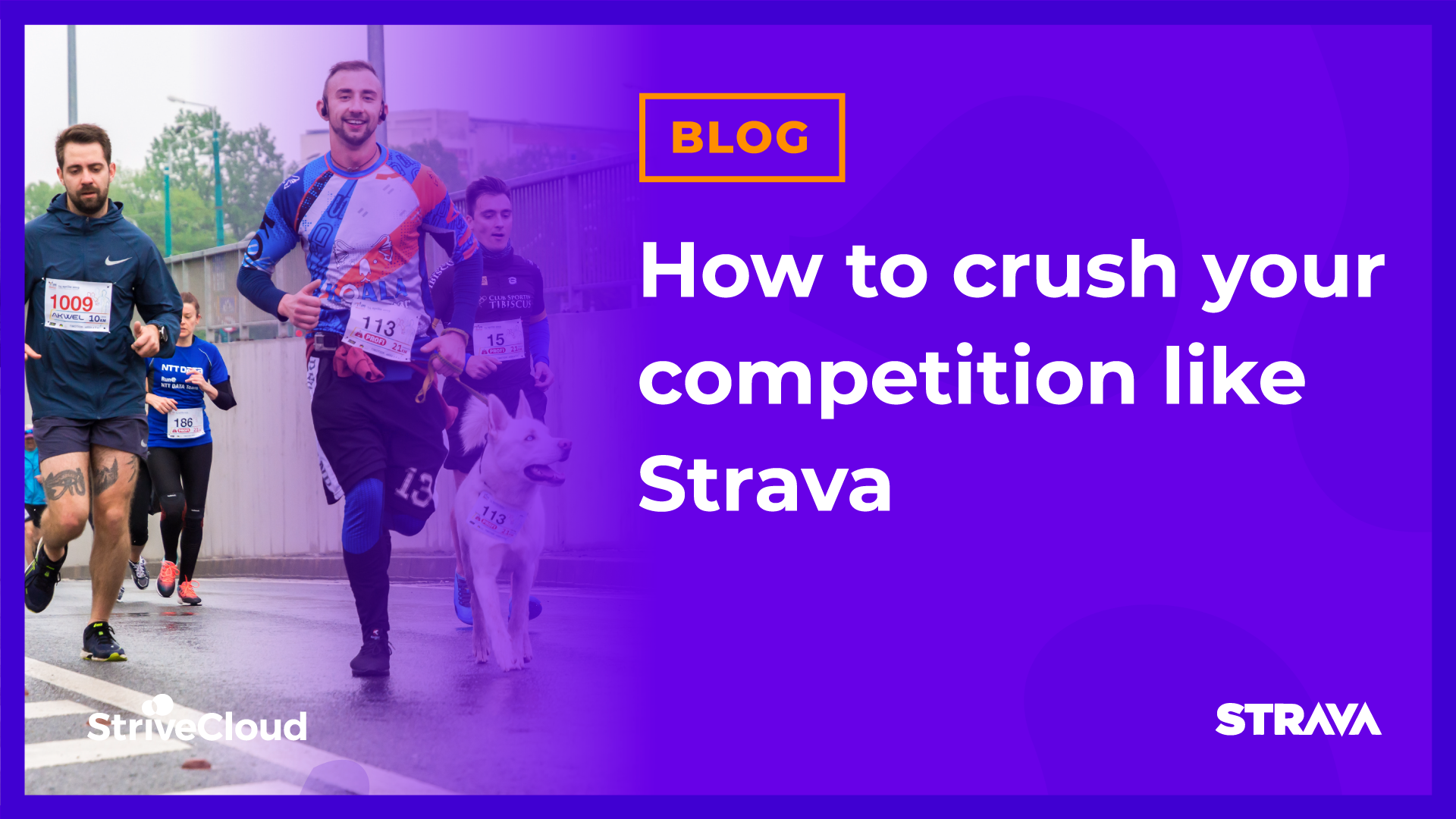
How to crush your competition like Strava
One could argue that fighting user churn is one of the most difficult tasks to achieve as an app. In 2019 only 3 in 10 users were retained after three months which means the average churn is over 70%! Not all apps seem to struggle with this however. Strava for example is one of the most used fitness apps in the world. With over 55 million users, growing at a rate of 1 million new users a month, it seems like they have figured out how to engage their audience. Read the full blog to find out how Strava keeps users hooked!
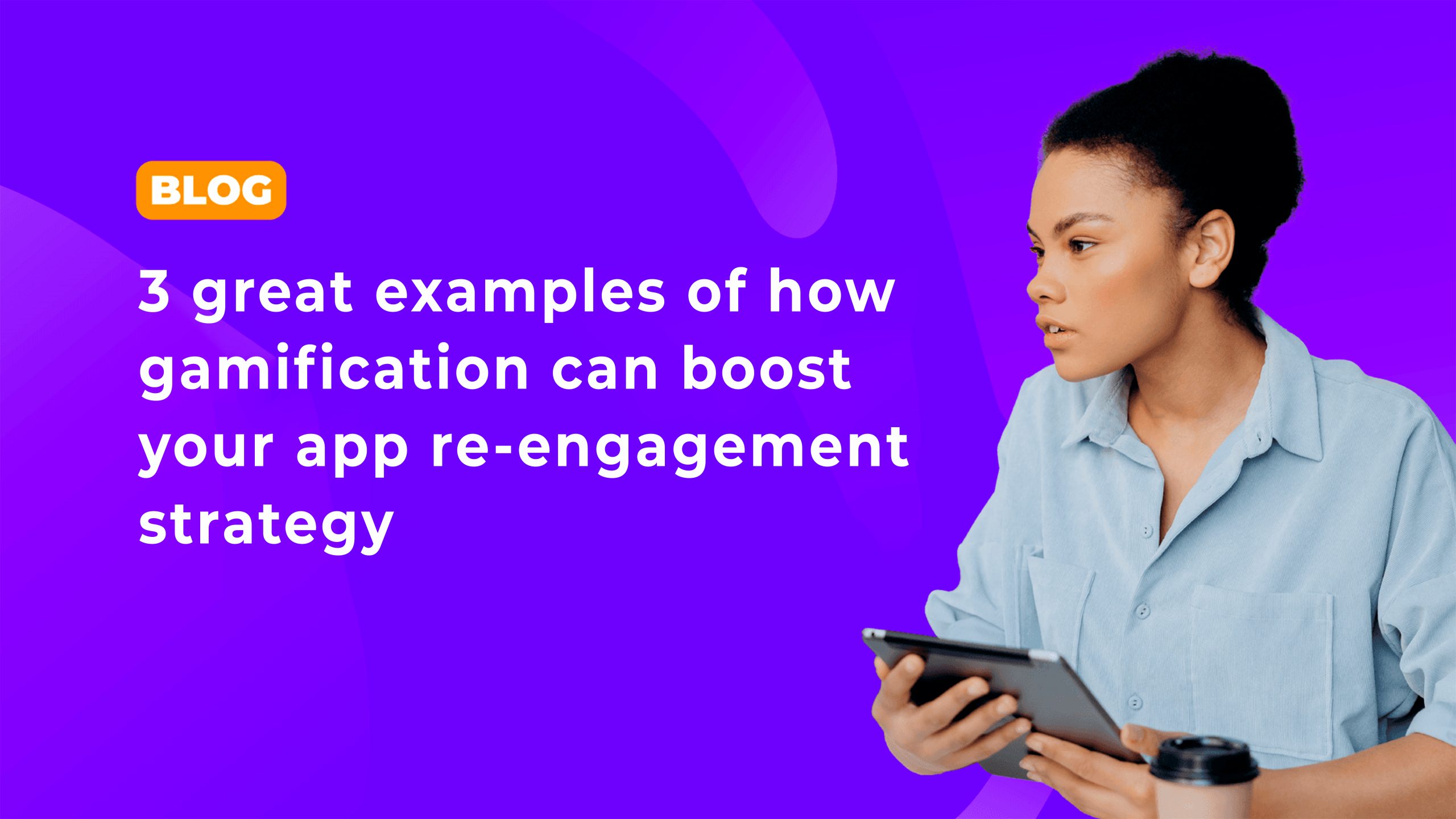
3 great examples of how gamification can boost your app re-engagement strategy
User acquisition costs are on the rise. In 2021, it cost on average $1.22. Given this, user retention is more important than ever, and one of the best things you can do to improve it is to optimize your re-engagement strategy. Read on to get started!

